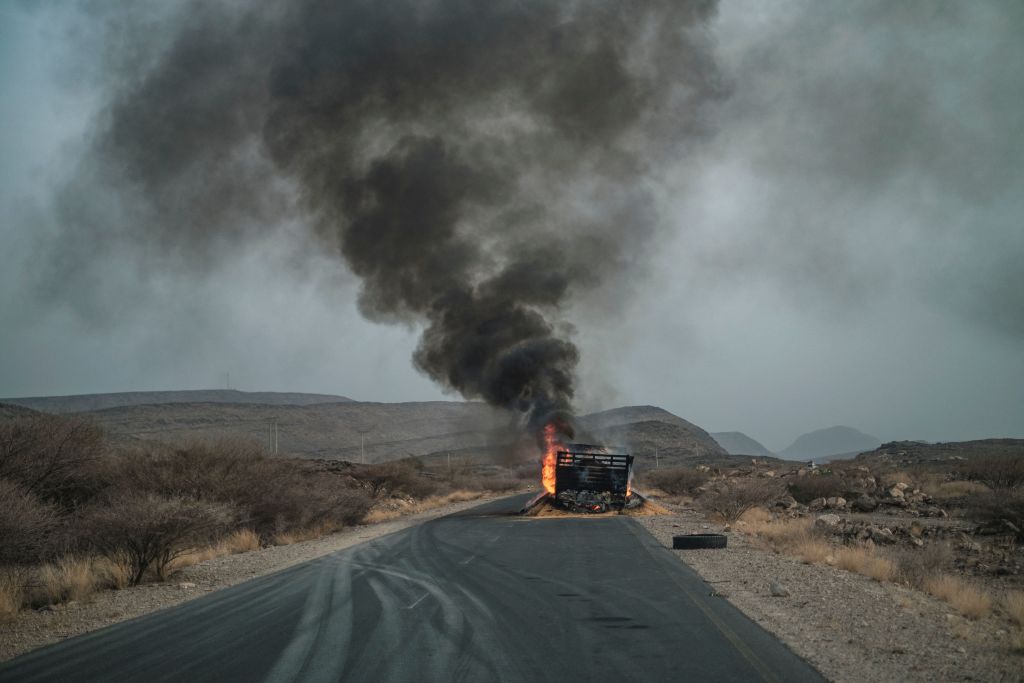ADF STAFF
Dr. Tedros Adhanom Ghebreyesus, director-general of the World Health Organization, revealed that he cannot help family members who are starving in Ethiopia’s Tigray region.
“I have many relatives there,” he said during an emotional news conference after fighting reignited in August following several months of relative calm. “I want to send them money. I cannot send them money. They are starving. I know I cannot help them. They are completely sealed off. I can’t speak to them.”
The Ethiopian government has isolated the northern Tigray region, blocking telecommunications, electricity, banking, media coverage and much of the humanitarian aid since fighting began in November 2020. An estimated 80% of people in Tigray are food insecure and 13 million people nationwide need food assistance, the United Nations reported.
Ethiopian Prime Minister Abiy Ahmed says the blockades are necessary to control and contain the violence, but the media blackout means a war that threatens to engulf the region is being hidden from the outside world.
Zecharias Zelalem, an Ethiopian freelance journalist living outside the country, described some of the tactics allegedly being employed by all of the combatants. The fighting is dominated by infantry units, which sometimes means fighters armed with AK-47’s face mechanized brigades and sustain heavy losses. But, he acknowledged, verifying these reports is extremely difficult in areas with no communication.
“There is a tendency by both sides to deploy the term ‘human wave’ as part of media propaganda to demoralize their foes and push enemy fighters to defect from their ranks,” he told ADF of the reports of unprotected infantry assaults.
It could be true, he said, because all the factions involved have recruited and deployed thousands of new, poorly trained conscripts.
“These new recruits, thrown into the heat of battle, perish in droves if they don’t surrender,” he said. “With precious little in terms of military gains and advances, it’s a deadly quagmire for all involved.”
Few international media outlets have a presence in Ethiopia, where authorities have expelled some foreign correspondents.
“Access to communications and other basic services, and most importantly humanitarian assistance, is explicitly used as a bargaining chip by the Ethiopian government,” political analyst Goitom Gebreluel told Reuters.
“It is used as leverage against both Tigray and the international community.”
The scope and scale of the conflict in Ethiopia has expanded to historic proportions since fighting resumed, according to analyst Cameron Hudson.
“This is the new Great War of Africa,” he told the newspaper The Telegraph, referencing the First and Second Congo Wars that killed more than 5 million people two decades ago.
“You have the confirmed presence of forces who either willingly or unwillingly are fighting in this conflict from the neighboring states: Eritrea, Somalia and Sudan and now increasing signs that forces from as far away as Chad, Niger and Libya may also be playing a role.
“This comes on top of an influx of next-generation drones and battlefield munitions from Turkey, the United Arab Emirates, Russia, Iran and China.”
As much of Ethiopia has been embroiled in ethnic violence, all of the combatants in the Tigray conflict have been accused of war crimes and crimes against humanity, according to the U.N.
William Davison, a senior Ethiopia analyst at the International Crisis Group, said the latest surge of violence in Ethiopia’s civil war likely makes it the deadliest war in the world with the largest number of combatants.
“This has been an infantry-dominated war, particularly on the side of besieged Tigray, which over the last eighteen months or so has built a force that’s said to be in the hundreds of thousands,” he told The Telegraph.
“With the federal and Tigray camps claiming the other is using ‘human wave’ tactics, they both privately report that there have been tens of thousands of battlefield deaths just in the last month since fighting resumed.”
When a monthslong cease-fire this year offered some relief for millions in the region, the conflict fell out of international headlines. Since February, Russia’s invasion of Ukraine has gripped the world’s attention.
In August, Tedros said the situation in Tigray is worse than in Ukraine.
“Nowhere on earth are 6 million people sealed off, from basic services, from their own money, from telecom, from food, from medicine,” he said. “This is the worst disaster on earth.”

